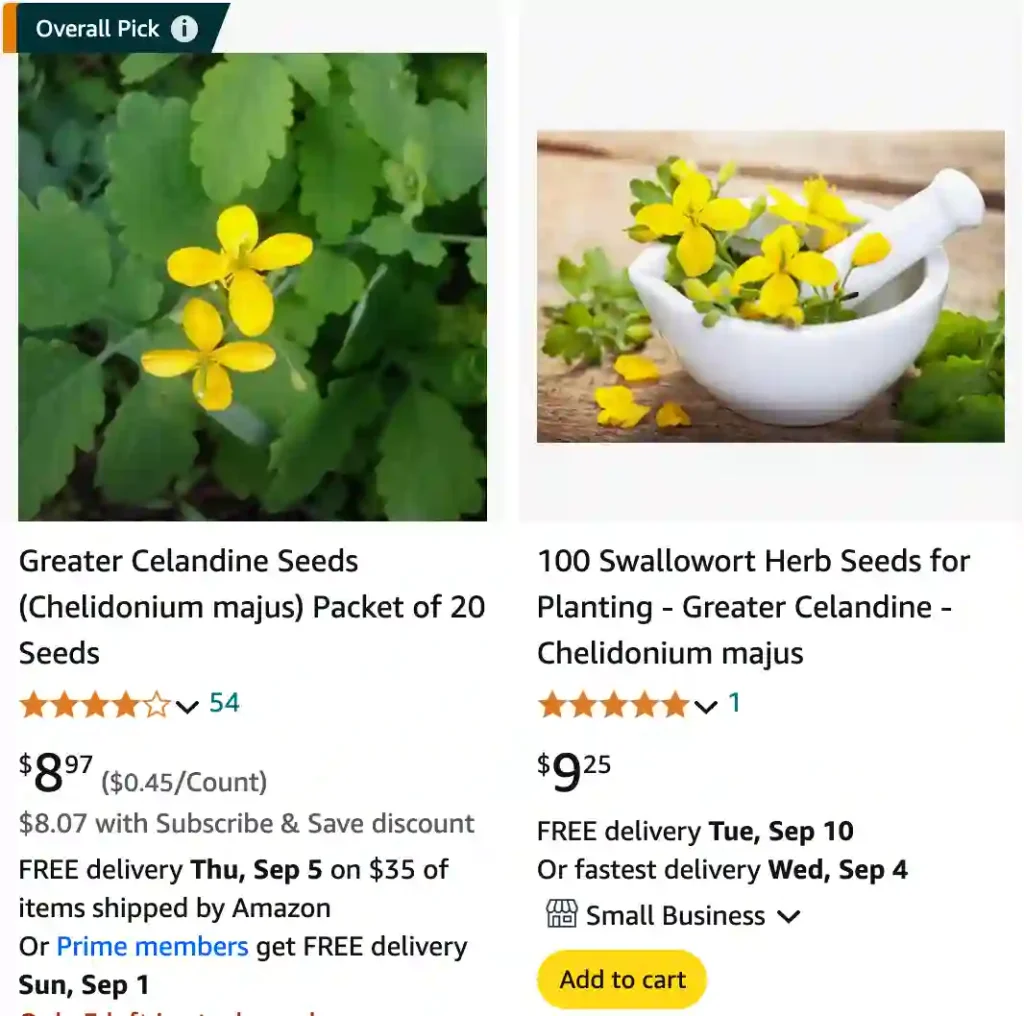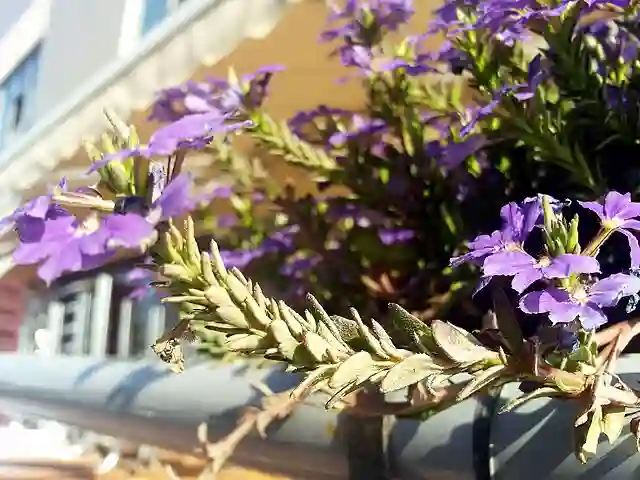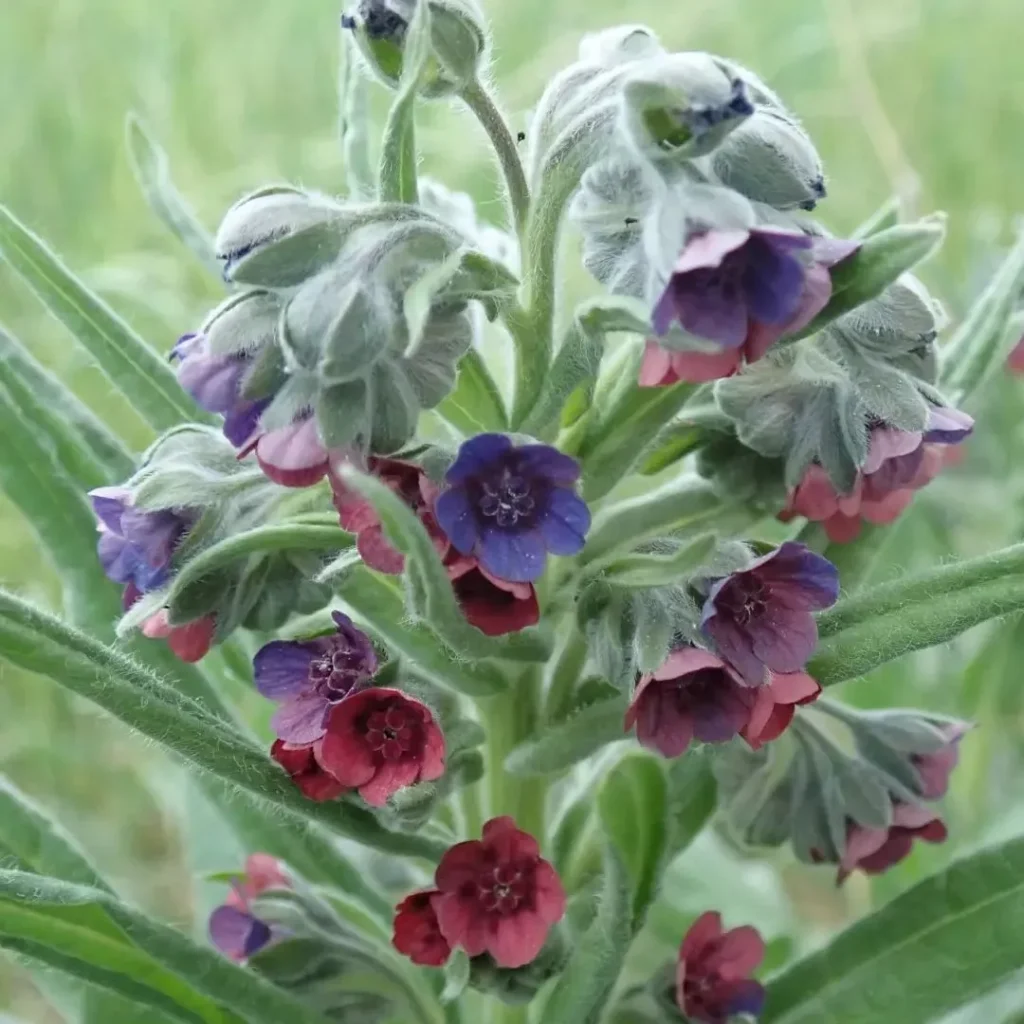
FAQs About Chelidonium Majus
When I first stumbled upon Chelidonium Majus, I was intrigued by its rich history and unique characteristics. This herb, often overshadowed by more popular plants, has a lot to offer. Here’s a comprehensive guide based on my exploration of Chelidonium Majus, including its uses, care, and comparisons with similar plants.
2 Species in Genus Chelidonium
What is Chelidonium Majus?
Chelidonium Majus, commonly known as Greater Celandine, is a perennial herb native to Europe and parts of Asia. It belongs to the poppy family and is known for its distinctive yellow-orange sap and bright yellow flowers. The plant typically grows to about 1-2 feet in height and has a robust, spreading nature.
What is Chelidonium Majus Used For?
Chelidonium Majus has been used in traditional medicine for centuries. It’s known for its various applications, including:
- Digestive Health: It’s used to treat liver ailments and digestive disorders. The plant has mild laxative properties and is believed to support liver function.
- Skin Conditions: The plant’s sap has been used to treat warts, eczema, and other skin conditions. Its antiviral and antimicrobial properties are valued in topical applications.
- Pain Relief: In traditional medicine, Chelidonium Majus has been used for its analgesic properties, helping with pain management.
How to Grow Chelidonium Majus?
Growing Chelidonium Majus is relatively straightforward, as it is quite hardy. Here’s what I’ve learned about cultivating this plant:
- Soil Requirements: Chelidonium Majus thrives in well-drained, fertile soil. It prefers a slightly acidic to neutral pH.
- Sunlight: While it can tolerate full sun, the plant does best in partial shade. Too much direct sunlight can cause stress to the plant.
- Watering: Regular watering is essential, especially during dry periods. However, the plant should not be waterlogged.
- Propagation: Chelidonium Majus can be propagated by seeds or by dividing established clumps. Seeds should be sown in early spring or late autumn.
How to Use Chelidonium Majus?
Using Chelidonium Majus involves several methods, depending on what you’re treating:
- Topical Application: For skin conditions, the fresh sap can be applied directly to affected areas. However, it should be used cautiously as it can cause irritation in some individuals.
- Infusions and Teas: The dried leaves and flowers can be used to make herbal teas, which are thought to support liver health and digestive function.
- Extracts: Chelidonium Majus extract can be found in tinctures and supplements. These are used for more concentrated effects, especially for liver support.
What is Chelidonium Majus Extract?
Chelidonium Majus extract is a concentrated form of the herb, typically derived from its leaves, flowers, and stems. It is used in various herbal preparations and supplements for its therapeutic properties. The extract is often used in tinctures, capsules, and liquid supplements. It provides a more potent dose of the plant’s active compounds, making it useful for specific health concerns.
What is Chelidonium Majus Homeopathic?
In homeopathy, Chelidonium Majus is used in highly diluted forms to treat a range of ailments, particularly those related to liver and gallbladder issues. Homeopathic remedies aim to stimulate the body’s own healing processes. Chelidonium Majus in homeopathy is believed to address symptoms such as jaundice, liver pain, and digestive disturbances.
What is the Meaning of Chelidonium Majus?
The name “Chelidonium” is derived from the Greek word “chelidon,” which means “swallow” (the bird). This is due to the plant’s historical association with the swallow bird, which was believed to use the plant for its medicinal properties. The term “Majus” refers to its size, distinguishing it from related species.
Chelidonium Majus vs Stylophorum Diphyllum
Comparing Chelidonium Majus to Stylophorum Diphyllum, or the Celandine Poppy, reveals some interesting differences:
- Appearance: Chelidonium Majus has yellow flowers and a more sprawling growth habit, while Stylophorum Diphyllum features bright yellow, poppy-like flowers and a more upright form.
- Uses: Both plants have been used in traditional medicine, but Chelidonium Majus is more commonly noted for liver health, while Stylophorum Diphyllum is less commonly used and more appreciated for its ornamental value.
Can You Grow Chelidonium Majus Indoors?
Growing Chelidonium Majus indoors is possible but challenging. The plant prefers cooler temperatures and ample light, which can be difficult to provide indoors. If you decide to grow it inside, ensure it receives plenty of indirect sunlight and maintain consistent moisture levels.
Is Chelidonium Majus Toxic?
Chelidonium Majus contains alkaloids that can be toxic in large amounts. The sap, in particular, should be used with caution, especially on sensitive skin. It’s important to use the plant under the guidance of a qualified herbalist or healthcare provider, especially when using it medicinally.
Benefits and Common Problems
Benefits:
- Supports liver health and digestion
- May help with certain skin conditions
- Has historical use in pain relief
Common Problems:
- Can be invasive if not managed properly
- May cause skin irritation in some individuals
- Needs careful handling due to its toxic components
Chelidonium Majus is a fascinating plant with a rich history and diverse uses. Whether you’re interested in its medicinal properties or its role in traditional practices, it’s a plant worth exploring. Just be sure to approach it with the same care and respect you would for any potent herb.
If i die, water my plants!



